Any visit to Naples is enhanced by a trip to the islands. Robin Crews finds that it’s easy to hop over the water to Ischia…
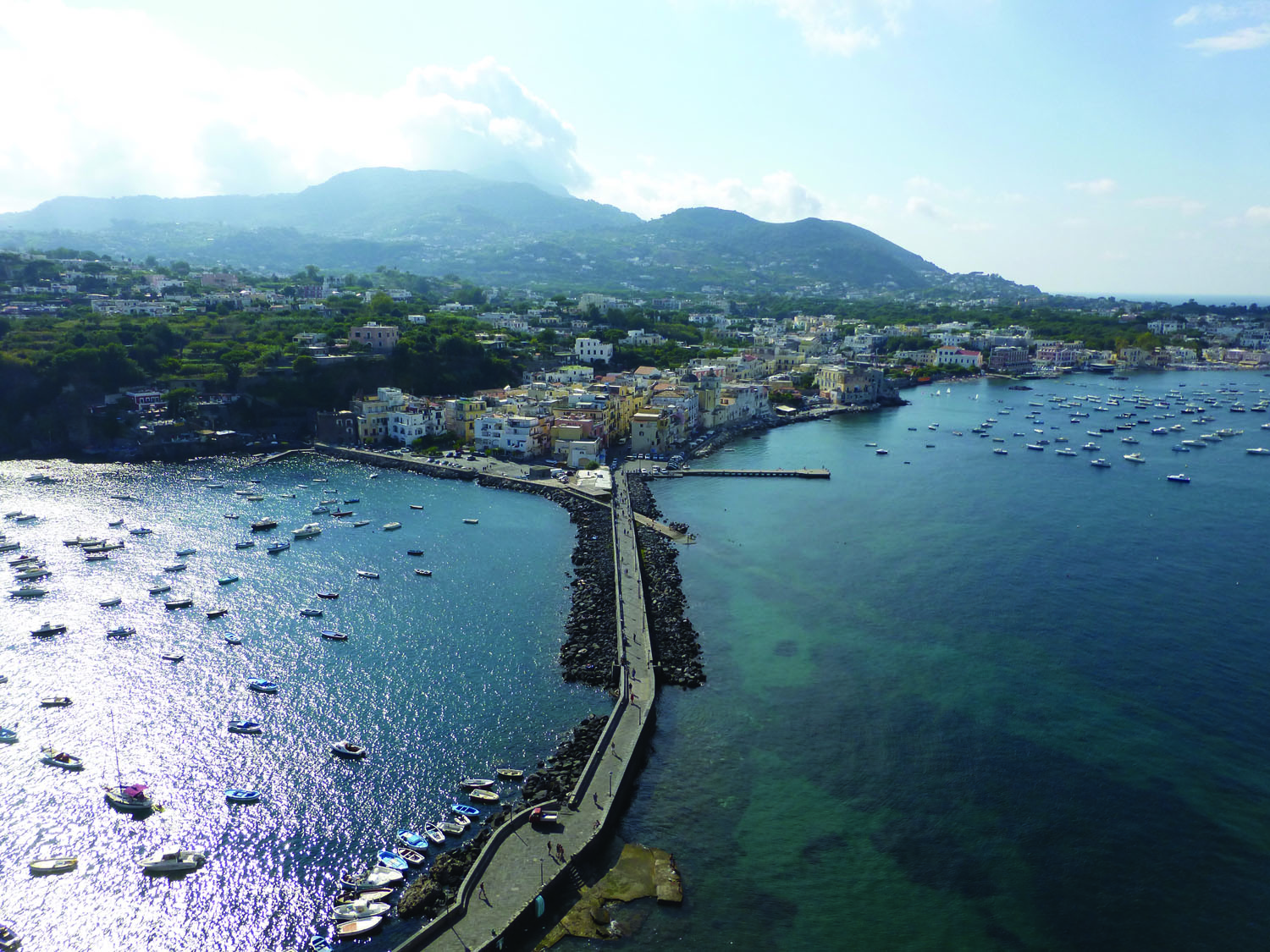
We all know that passion runs through the veins of Italians right throughout the peninsula, but in the Mezzogiorno there is something else coursing through the locals’ bodies.
As you travel south things clearly heat up, but it’s not just the temperature that tips the mercury. Volumes increase on the roads and in conversations; the chilli count on the menu goes up; and the pervading smell of sulphur indicates that hot rock also bubbles just beneath the surface of southern Italy.
The heat and fervour of the area is evidenced in your first contact with the people of Naples. Inhabitants of the city’s centro storico live with the ever-present possibility that today may be their last day on earth. Half of Naples sits on top of the Campi Flegrei, a huge area of unstable volcanic activity which in recent years has been showing worrying signs of a violent awakening.
Given the precarious nature of their existence, it’s perhaps understandable that the people seem to go out of their way to enjoy every moment of their days.
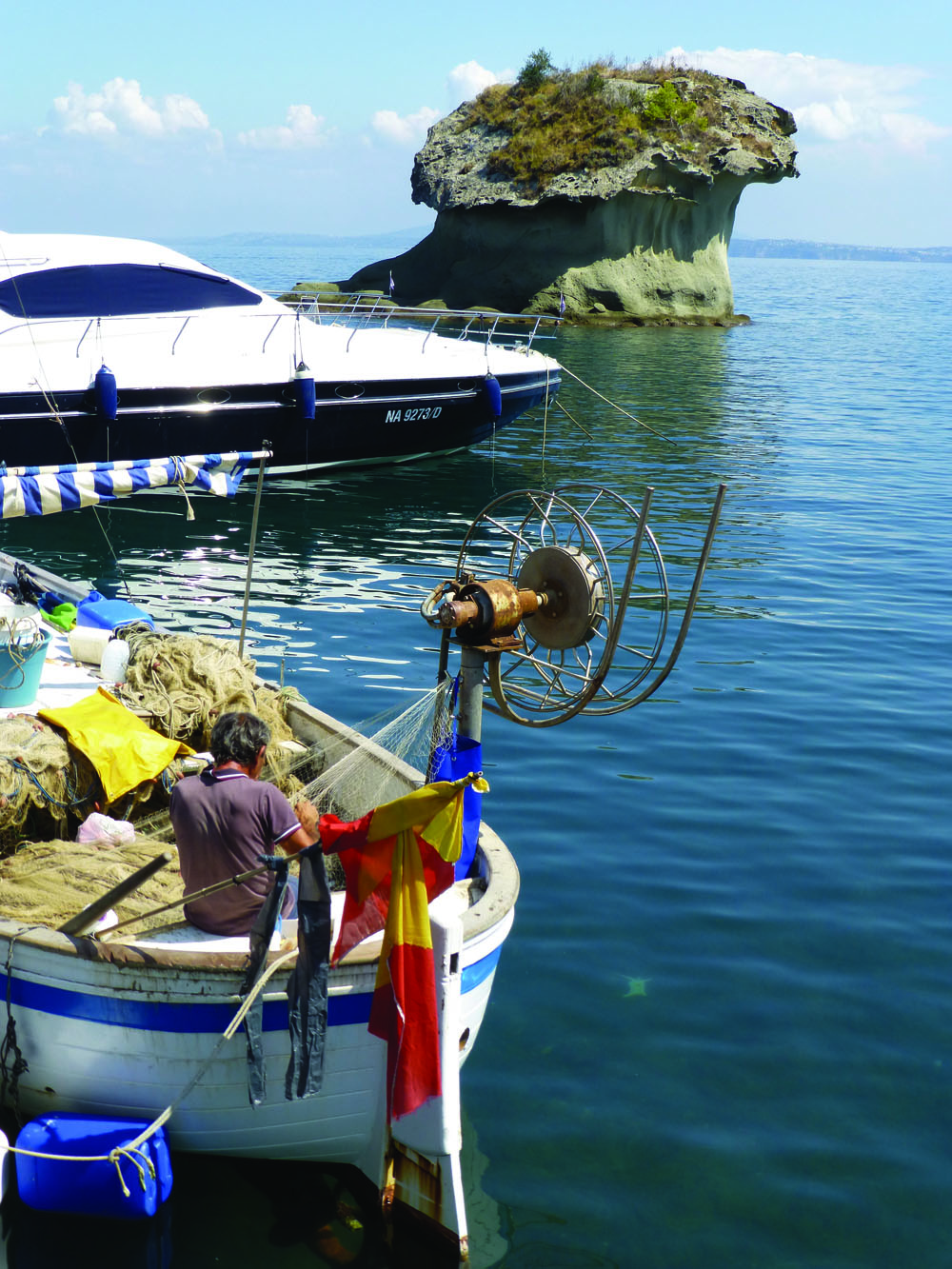 In the company of a gregarious Neapolitan driver, even the taxi transfer from Naples Capodichino Airport is an experience. Yes, you need to make sure you don’t get ripped off – an extra €15 on top of the regular fare seems to be the going rate – but your transfer is the perfect introduction to this mind-boggling city.
In the company of a gregarious Neapolitan driver, even the taxi transfer from Naples Capodichino Airport is an experience. Yes, you need to make sure you don’t get ripped off – an extra €15 on top of the regular fare seems to be the going rate – but your transfer is the perfect introduction to this mind-boggling city.
The problems of civic investment, or lack of it, and their effect on the city’s infrastructure is well known. It looks like locals regularly nip out to purloin bits of road to repair their houses. Huge gaps in the cobbles loom, but drivers seem oblivious to the axel-ruining craters and think “if I go really fast, my car will leap over that”. If you’re lucky, your driver will speak no English at all: his Italian conveys the excitement of the city in a way that English never can.
Once he discovered we were taking the ferry to Ischia, our driver took out his phone to look for photos of his summer trip to the island, and to show us some snaps of him swimming in the azzurro sea. “Look”, he said passing his phone over his shoulder while swerving across the road. “You can see me with my daughters on my shoulders. Ah, Ischia, la bella isola!”
La Bella Isola
Dropping us at Naples’ Molo Beverello passenger port, the boat is the only way to arrive on Ischia. You can take the sprightly but functional aliscafo (hydrofoil), or the slightly plodding but somehow more satisfying traghetto (ferry).
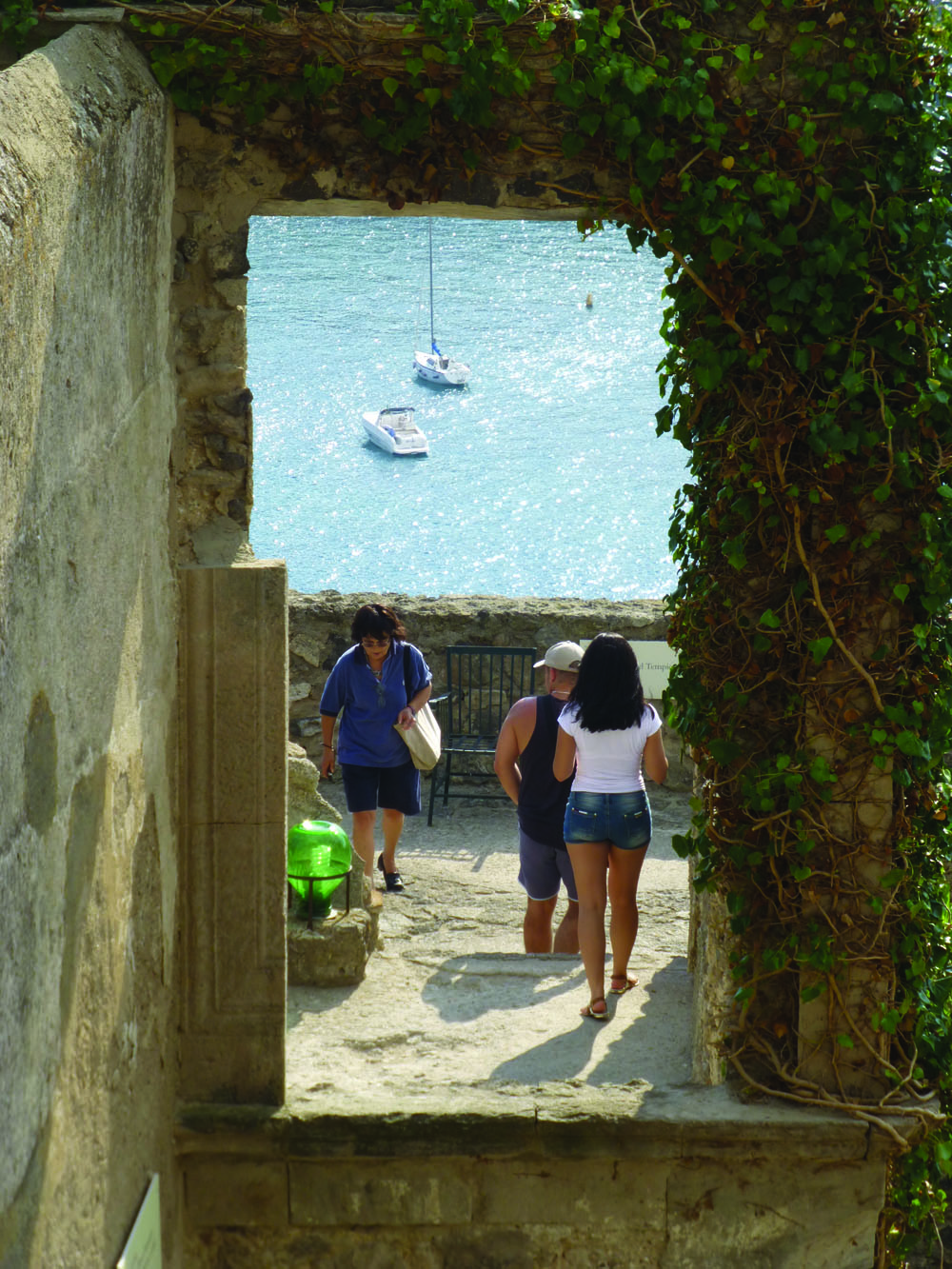 As you approach the island, the smell of gamberi all’aglio floats from restaurants lining the harbour of the small but perfectly-formed Ischia Porto.
As you approach the island, the smell of gamberi all’aglio floats from restaurants lining the harbour of the small but perfectly-formed Ischia Porto.
The town will be many travellers’ first view of the island, though you can also disembark at Casamicciola or Forio. Ischia Porto stretches along a ribbon of pretty coastline and its low-rise hotels, restaurants with sea views, and beach clubs make this a good base for a relaxing stay.
The town has good transport links with the rest of the island, with relatively regular, though slightly creaking, bus services to all points. It’s worth hopping on the public bus to follow the circular road around the island to take in the staggering coastal views.
Ischia is a relatively small island – less than 50 square kilometres – but punches well above its weight in must-see sights. Good for at least a five-day visit, the island has many points of interest on each of its craggy corners. Its centre – dominated by the 2,600ft Mount Epomeo which looms large over the whole island – has plenty to offer the more energetic visitor. A thigh-busting cycle or walk it may be, but your considerable efforts to reach the top are rewarded with views that seem to have been made in heaven, rather than forged in the bowels of the earth.
Back in the main town of Ischia Porto, all roads lead from the bustling harbour through the palm-lined and mainly pedestrianised town towards the unmissable Castello Aragonese. Despite the mosquito buzz of the odd scooter and small delivery van, the quiet roads leading to the island’s main sight are a refreshing change from the freneticism of Naples. Passing through streets of independent gift shops, cafés and churches, the buildings gradually become older and more picturesque the closer you get to the castle.
A mile or so from the harbour, the coastline opens out onto a narrow promontory leading to the imposing rock that is home to castle, monastery, churches and, these days, an impressive hotel.
Inhabited since the 5th century BC, this ‘island within an island’ is a great igneous rock which sits like St Michael’s Mount at the end of a narrow causeway that locals use as a platform to dive into the deep, warm waters.
Because of the various invasions and threats from pirates throughout the centuries, the castle used to be home to almost every inhabitant on the island. I can imagine the security the rock brought as we walk along the short tunnel under the mountain towards the lift to take us up to the main part of the mount. Plan for at least two hours of happy wandering as you’ll want to take your time climbing the steep steps to reach the views, which get progressively better as you climb.
Castello Aragonese isn’t the only rock to be reached by a causeway on the island. Sant Angelo on Ischia’s southern coast is another 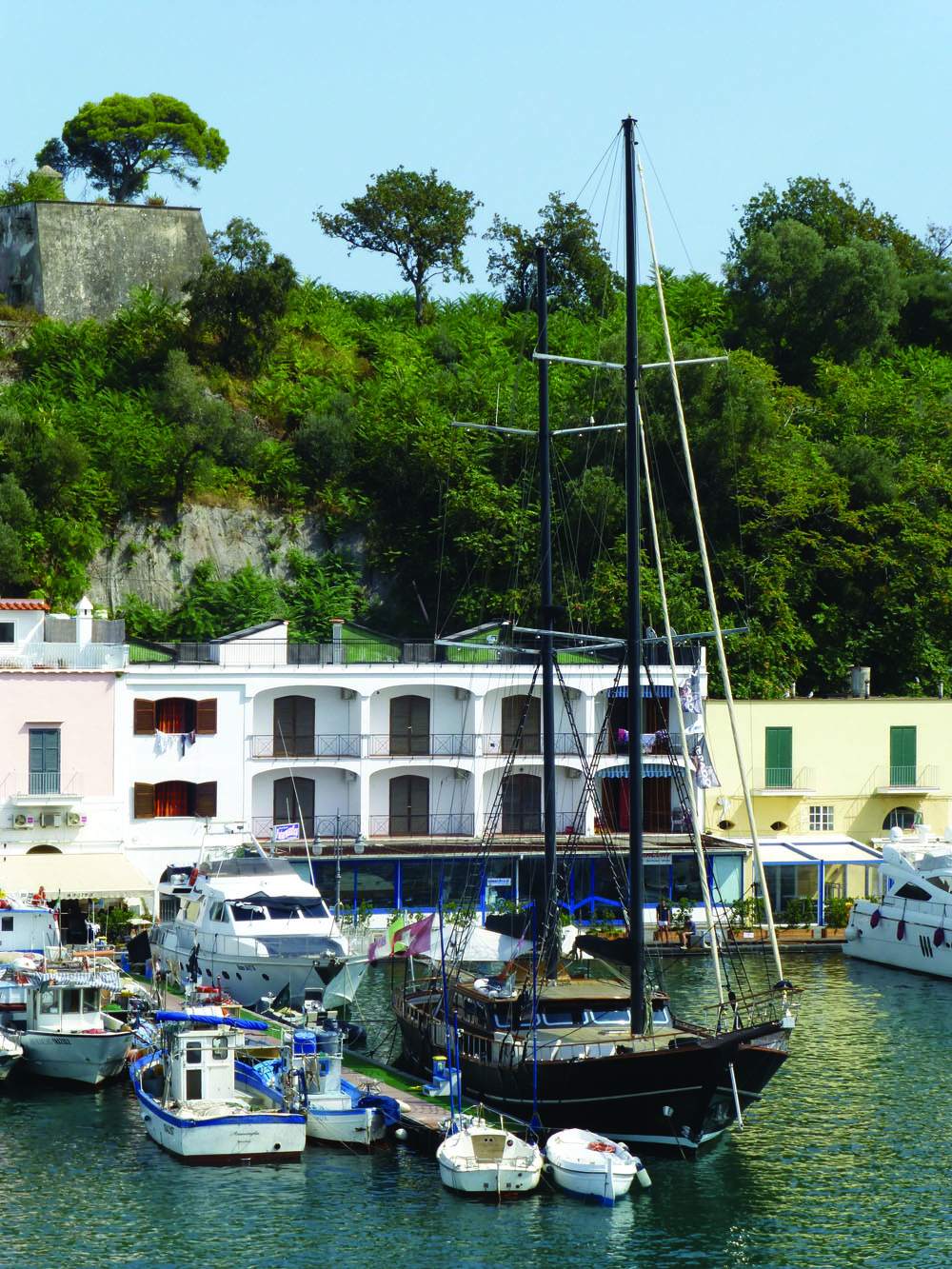 pretty holiday town with its own volcanically-produced landmark giving the weary traveller the chance to rest and cool off on lovely, clean beaches of its lower slopes.
pretty holiday town with its own volcanically-produced landmark giving the weary traveller the chance to rest and cool off on lovely, clean beaches of its lower slopes.
From Sant Angelo’s small harbour, you can take the five-minute water taxi to be dropped off right on the beach. Once we leapt from boat to soft sand, and staked our claim on the sparsely populated sunbeds, we noticed some of our fellow bathers covered in thick grey mud.
A word with one of the friendly beachside bar waitresses encouraged us to stroll to the western end of the beach to find a bath of volcanic springs and mud just waiting to be smothered all over our weary skin. We left Sant Angelo in the late afternoon with soft, conditioned skin as well as memories of a relaxing day at a special beach.
For visitors who base themselves around Ischia Porto and have less time on the island, beaches are easily accessible close to the town, though they are of the crowded, sunbed-choked variety so beloved in Italy.
For something much more secluded and serene, head to the north of the harbour and down the narrow, pretty streets to the Spiaggia degli Inglesi. Although only 800 metres from the harbour’s hubbub, the winding streets discourage mass visits, and you’ll be sharing the dark sand with locals and the more well-informed traveller.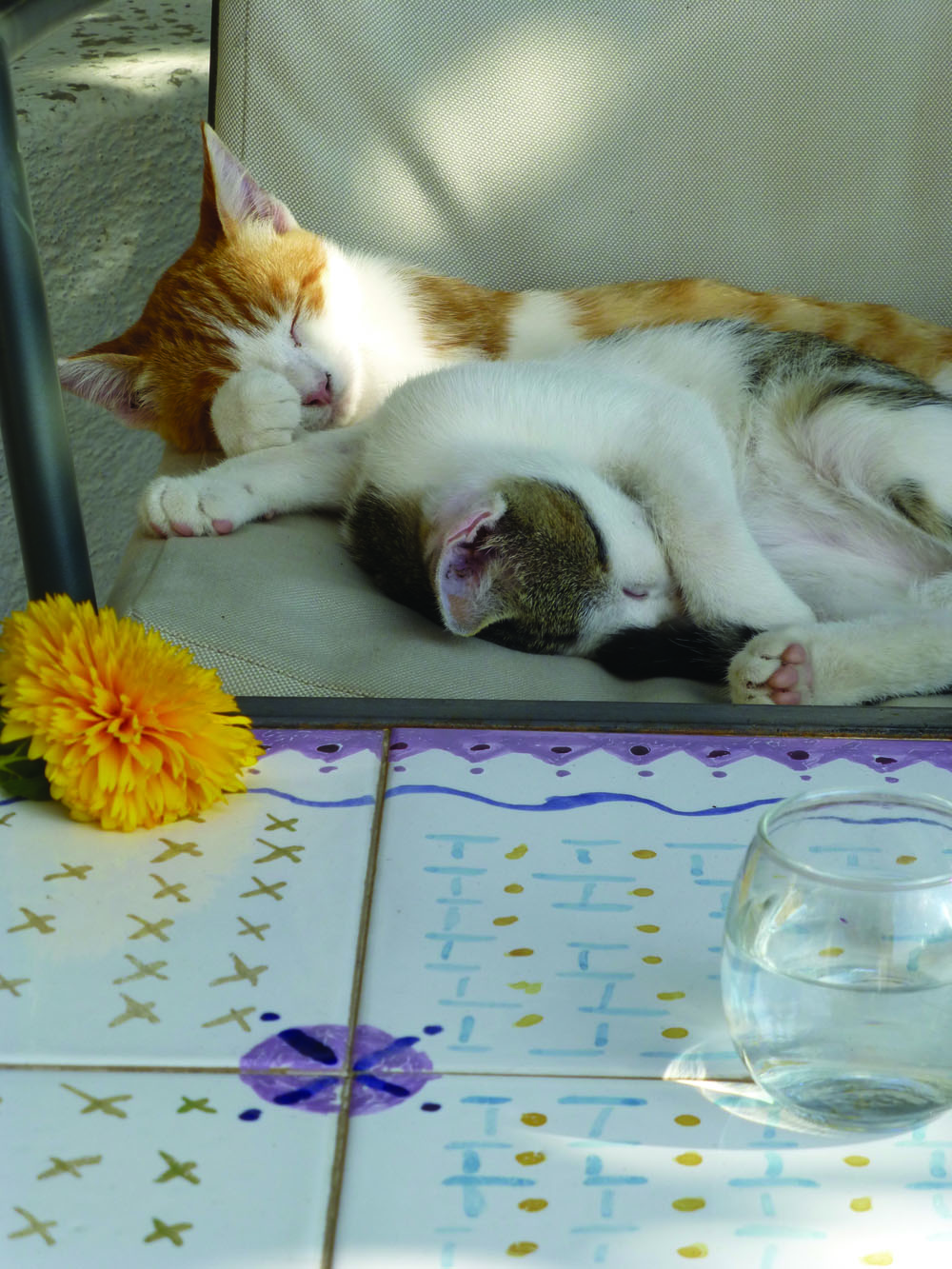
Ischia is known for its volcanic mud and thermal spas, and many hotels offer facilities to help you completely cast off your cares. You can find many such resorts around the town of Casamicciola, an hour’s walk north of Ischia Porto. But for a touch of genteel charm, carry on through the town and head for Lacco Ameno, probably the most charming resort on the island.
It too hosts bubbling spa hotels, but if you’re just looking for a small, relaxed restaurant to spend a few hours with a reasonably priced fish dish, head for a trattoria around the bizarre Il Fungo rock formation which sprouts incongruously from the quiet marina.
Another product of the island’s volcanic activity, Il Fungo looks like a petrified chocolate muffin growing from the sea. This has left a gravity-defying mushroom as an unusual landmark to gaze at while you’re enjoying your spaghetti alle vongole.
The Mouth of Hell
Leaving Ischia is as sad as it is joyous to arrive. We take the mid-morning ferry out of Ischia Porto heading to the mainland again, but this time our destination is Pozzuoli. A satellite town of Naples, in truth there’s little to recommend Pozzuoli to visitors. This is despite the fact that it is home to the Roman ‘Temple of Serapis’ and the Flavian Amphitheatre – two sights which anywhere else in the world would probably make the town a bustling hub of tourism.
Both sights are worth wandering past on the way up the hill towards the town’s sulphurous star – the mighty Solfatara volcano.
Pozzuoli is at the heart of the Campi Flegrei and the grumbling Solfatara is a ‘dormant’ volcano sitting a mile up the hill from the port. Yet it doesn’t feel dormant, judging by the heat belching from the crater.
The entrance is unassuming enough. A gravel path takes you through a wooded area and it feels like a gentle nature ramble, albeit with a curious eggy tinge on the wind. Then the path goes up an incline and you look to your left to see that you are walking up the inside of a perfect crater. With a quarter mile radius, you look across the quarry-like cap of the volcano, with steam creeping up crater walls and blocks of flats pe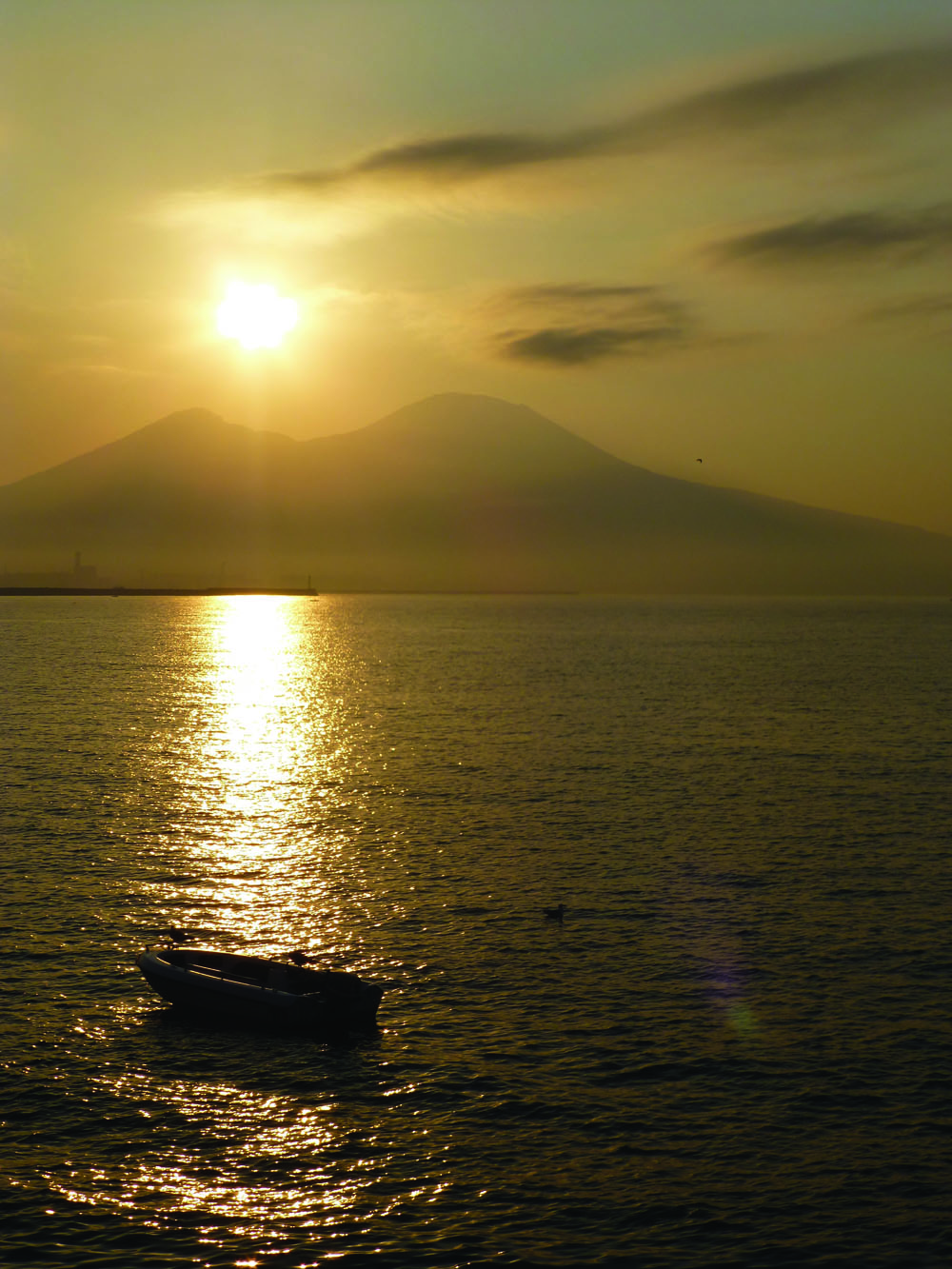 rched on the crater’s lip! The residents of these precarious homes clearly have bravery or faith beyond reason.
rched on the crater’s lip! The residents of these precarious homes clearly have bravery or faith beyond reason.
Walking across the cap of the volcano is a bizarre experience. Pick up a great pumice rock, which weighs far less than you’d expect, and drop it on the ground. You’ll hear the unnerving sound of hollow ground beneath your feet. As the steam rising from the small fissures underfoot indicates the incredible temperatures beneath, you tread especially lightly across the crater to get a closer view of the bigger cracks in the earth which belch noxious gases and amazing heat.
The Victorians thought that these unpleasant fumes were beneficial and built a series of brick sweat boxes so they could take the vapours. The boxes are still there if you’re brave enough to crouch inside to see whether you can stand the heat.
As an aside, the Solfatara site also hosts what’s got to be one of the most unusual campsites in the world. Sitting in a small wooded area that backs straight onto the volcanic cap, this campsite welcomes caravans, motorhomes and tents, and must be the only place in the world where you could potentially boil in your (sleeping) bag.
Back down the hill and on the train from Pozzuoli to Napoli Centrale, again right through the volcanic rock, and our trip has come full circle. See Naples and die? Well hopefully not until we can get back to this fiery land at least once more.
